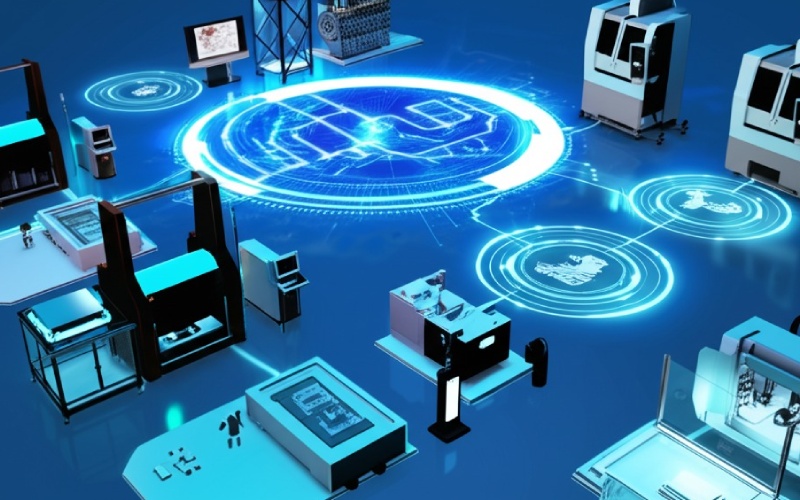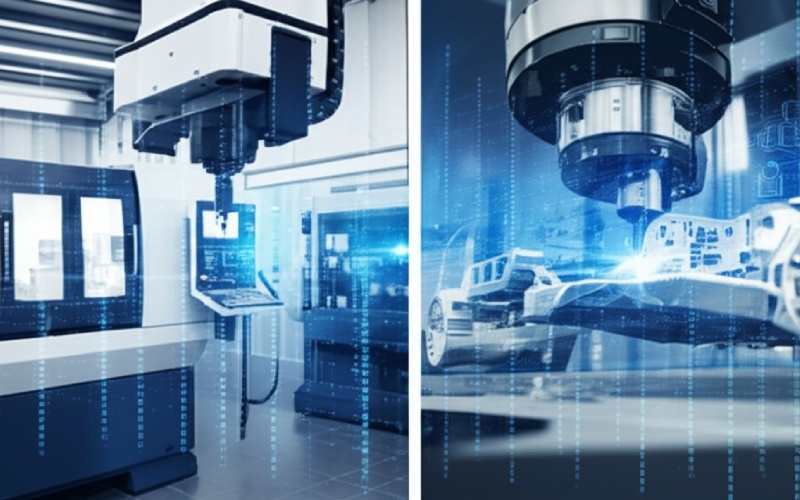Let Istar help you get started on your project with our experience and know-how!
Upload your design files and production requirements and we will get back to you within 30 minutes!

Do you have a great idea for a new product? It can be a hard thing to do to turn that idea into something you can sell. The path from an idea to a finished product is made of many steps. If you miss a step, it can make you lose time and money. This is where New Product Introduction, or NPI, can help.
This article is your easy guide to the world of NPI manufacturing. We will tell you what it is. We will explain why it is very important. We will also show you how it helps you build a better product. You will learn the main steps of the process and how to stay away from common problems. Reading this will help you launch your new products more quickly and with fewer issues. This will give your business a big help.
The New Product Introduction (NPI) is a plan with clear steps. It is a set of directions that a company follows. It helps take a product idea from just a thought to a real product that people can buy in a store. You can think of it like a recipe for making successful new products. If you did not have a recipe, you might forget a part or mix things in the wrong way. The NPI process makes sure that does not happen. It puts every job in order, from the first drawing to the final box it comes in. The npi process involves many different groups of people working together, like designers, engineers, and suppliers.
This organized plan helps everyone know what they need to do. The main goal is to make sure nothing is forgotten. The new product introduction is like a bridge. It connects the first product concept to the final product that customers will use. It is about creating a new product in a smart and organized way. The NPI process looks at all the details, both big and small. This kind of careful planning is what makes the difference between successful new products and the ones that do not work out.
Having a clear npi strategy is like using a map for a long car ride. It stops you from getting lost. A good plan for new product introduction helps you save money and use less time. When you plan well, you can spot problems early on. This is before they cost a lot to fix. This is how you lower development costs. A good plan makes sure that the final product is very good. Planning well from the very start helps to enhance product quality.
An effective npi is also a big part of getting your product to people faster. A shorter time to market means you can begin to make money more quickly. It also helps you get ahead of other companies selling similar things. A new product introduction that is planned out well helps make a smooth product launch. A successful product launch is very important for the future of your new products. A successful npi makes the whole process of making new products much easier and helps you make more money.

The new product introduction process can be broken down into a few clear steps. Each step has its own goal. Following these steps helps keep your project for launching new products on the right path. This npi framework gives a plan for the whole process. This is the process of taking a product from an idea to a real thing.
Here is a simple look at the common steps. The process moves a product from concept to its final form.
| Step Number | Step Name | What Happens in this Step? |
|---|---|---|
| 1 | Concept | The first idea for one of the new products is created and explained. |
| 2 | Feasibility | The team checks if the idea can be made and sold to make money. |
| 3 | Design and Development | Engineers and designers make the detailed plans and drawings for the product. |
| 4 | Prototype | A working model of the product is made to test out the design. |
| 5 | Validation | The design and the making process are tested to be sure everything works well. |
| 6 | Production Ramp-Up | The factory begins to make the product, slow at first, and then faster. |
| 7 | Mass Production | The factory makes the product in big numbers to sell to many customers. |
This organized new product introduction process is very important. It makes sure every small thing is checked. The new product development process needs this much care to bring great new products into the world.
New Product Introduction is not something you do after product development. It is a main part of it. A good NPI plan leads the whole product development process. It makes sure that while you design the product, you are also thinking about how it will be built. This link is very important. It makes designers think about how things are really made in a factory. The plan also includes the supply chain from the very beginning.
The supply chain is the group of companies that give you the parts you need to make your new products. Good supply chain management means you get the right parts, for a good price, at the right time. During the new product introduction, you need to pick your suppliers. You also have to make sure they can give you what you need. If you wait to think about the supply chain, you could have long waits and high costs. Planning for this early helps you manage lead times and avoid bad surprises. This is a very important part of the NPD process.
A prototype is a first version of your product. It is a very important step in the npi process. Building a prototype allows you to see and feel your idea for the first time. It is much easier to find problems with a real model than with a picture on a computer. Your engineering team can test the prototype to see if it works like it should. This is a key part of new product development.
You may even build more than one prototype. Each new version gets better and closer to the final product. This testing helps to validate the product design. It costs a lot less to fix a problem when you have a prototype. It costs much more after you have started making thousands of products. The prototype helps show that your design is good before you spend a lot of money on tools and making the product. This is an important part of the process of bringing a new product to life. When you want to introduce a new product, a prototype is a big help.
The time when a product moves from the design team to the factory can often cause problems. An efficient new product introduction plan helps make this step go smoothly. The most important thing is talking to each other. Product designers and product developers must work very closely with the factory team. They should share news and ideas early and often.
The factory must understand the design completely. The people there need to know if their machines and workers have the right manufacturing capabilities. They need to know if they can build the new products the right way. A good development process has meetings where factory experts look at the design. They can give ideas and point out problems. This helps find possible manufacturing issues before they turn into big problems. This part of the npi process helps turn a drawing into a real thing on the production line. This step is a big part of the process of taking a product from the initial concept to a real item.
Design for Manufacturing (DFM) is a very important idea in new product introduction. It means designing new products in a way that makes them easy and cheap to build. It is one of the most important best practices for making products. When a product is easy to make, it means there will be fewer mistakes. It also means better quality and a lower product cost. This is a main goal of any good npi process.
DFM asks designers to think like people who work in a factory. They might pick a different material that is easier to use. They might change a shape to make a part easier to create. These small changes can make a big difference in production efficiency and production speed. A robust npi process always includes DFM. It is one of the best practices for design. It is also a key part of the new product introduction process. This way of doing things helps make sure you create an improved product.
Before you start making thousands of your new products, you have to be sure that everything is just right. This step is called validation. Validation is all about testing and checking. You need to test the product. You also need to test the production process used to make it. The goal is to make sure the product meets all the quality standards it needs to. Strong quality control is very important here.
One official step is the production part approval process. This is when you build a small number of products using the final tools and methods. You look at these parts very, very carefully. You check every size and test every part of how it works. This is how you validate that the manufacturing process is working well. It shows you it can make good parts over and over again. After everything is approved, you can feel good about starting mass production. This step helps you send out an enhanced product and avoid having to take products back.

The path of bringing a new product to sell has many hard parts. A well-planned npi process can help you get past them. One of the biggest problems is when teams do not talk to each other enough. If the design process is not shared with the factory team, you will have production issues. This can cause long waits and make your new products cost more.
Another problem is moving too fast through the first steps. If you do not give enough time to the design stage or to testing your prototype, you will have bigger problems later. Finding a mistake during full-scale production is a very bad situation. Planning carefully throughout the new product introduction is the best way to avoid this. The launching of a new product is not simple, and many things can go wrong. A good new product introduction plan helps you get ready for these problems. It helps you keep your project for your most important new products moving forward.
The best approach to npi is to be very careful and to work together as a team. It is not just a list of things to do. It is a way of working. Every team, from marketing to engineering to the supply chain, must work together from the very start. This teamwork is what makes an effective npi process work. The goal is not just to launch one product. The real goal is to build a system that helps you bring new products to market over and over again.
This focus on the process helps you develop new products better in the future. You learn something from every project. You can use those lessons to make your new product introduction better for the next product. This helps the product through its whole product life cycle and helps with product innovation. The process of introducing new products becomes a key strength of your company. This makes sure that the launching of new products is something you can do successfully again and again, not just a one-time lucky event. This is how a great new product introduction helps your company grow.